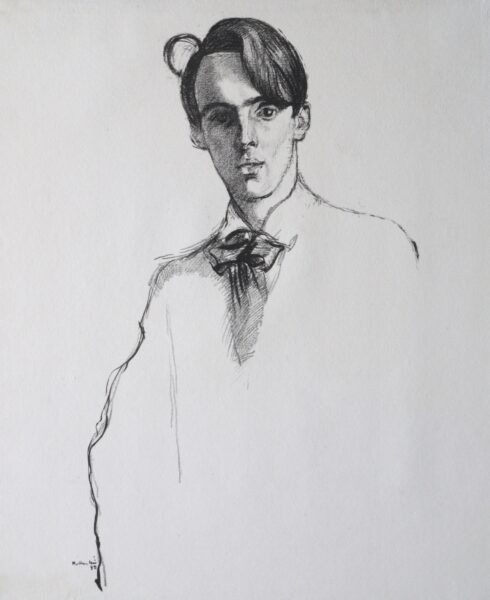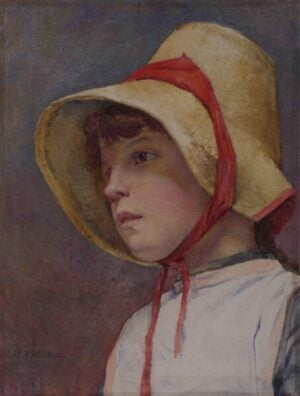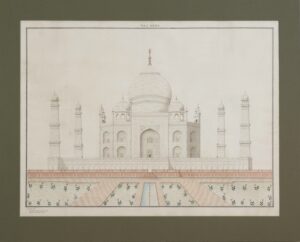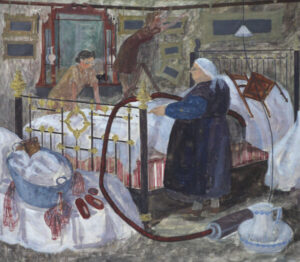Rothenstein, Sir William (1872-1945)
Printmaker, teacher and writer. He was the son of a wool merchant and delighted in the grim landscape of his native Yorkshire, which was the subject of some early watercolours. His talent was recognized as early as 1891, when an exhibition of his work and that of Charles Conder at the Galerie Hadrien Thomas in Paris attracted the attention of many artists including Pissarro and Degas. After an inspiring four years he left Paris for Oxford where he made a number of portrait lithographs.
Rothenstein was also prolific as a painter. In the early 1900s his style gradually evolved towards brighter colours in response to Post-Impressionism, but he never incorporated its more advanced developments into his own art. He had a particular feeling for the landscapes of Gloucestershire, where he lived from 1912 to 1919.
During World War I Rothenstein was an Official War Artist to the British and Canadian armies on the Western Front, recording the devastation caused by war. Between 1920 and 1935 he served as Principal of the Royal College of Art, where his pupils included Henry Moore and Barbara Hepworth. Serious illness prevented him from drawing or painting in the mid 1920s. He had the pleasure of working as an artist almost to the end of his life. His son Michael Rothenstein (1908–93) was also an artist.



